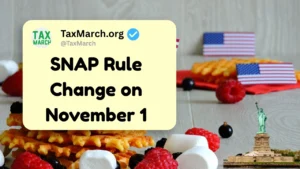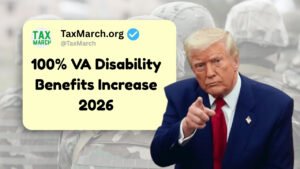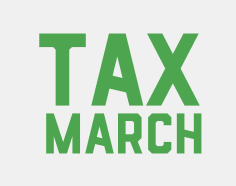As the federal government shutdown continues, the clock is ticking toward a devastating scenario for millions of low-income Americans. The Supplemental Nutrition Assistance Program (SNAP) and the Special Supplemental Nutrition Program for Women, Infants, and Children (WIC)—lifelines for families facing hunger—are at risk.

If Congress does not act soon, these critical food assistance programs may cease or face significant disruption, leaving 42 million Americans at risk of losing their primary source of food assistance. This article explores the looming threat to SNAP and WIC, the immediate impact on vulnerable populations, and the desperate need for action from Congress to prevent a hunger crisis.
Contents
SNAP and WIC Benefits – Overview
| Program Name | Supplemental Nutrition Assistance Program |
| Eligibility | Low-income women, children, and families |
| Authority | U.S. Department of Agriculture |
| Who Willl be Affected? | Low income individuals and households |
| Estimated Date of Shutdown | November 2025 |
| Official Website | fns.usda.gov |
“The potential loss of SNAP benefits would immediately force families to make impossible choices between food and other essential needs. This crisis underscores the fragility of our social safety net.” – U.S. Department of Agriculture (USDA) Official
Also Read SNAP Rule Change on November 1: Here’s Everything You Need to Know!
SNAP Rule Change on November 1: Here’s Everything You Need to Know!
SNAP and WIC at Risk of Disruption Due to Shutdown
| Program | Description | Affected Population | Funding Status | Impact of Shutdown |
|---|---|---|---|---|
| SNAP (Food Stamps) | Provides monthly food assistance to low-income families. | 42 million Americans, including children and elderly | Federal funding set to run out after November 1, 2025 | Benefits will be suspended, causing food insecurity. |
| WIC | Provides nutrition assistance to pregnant women, infants, and children up to age 5. | 7 million mothers, infants, and children | Temporary funding but at risk after early November 2025 | Immediate disruption to food and health services. |
| Food Banks/Charities | Charitable organizations that provide food aid. | Families in need, particularly SNAP/WIC recipients | Overwhelmed by increased demand and reduced supplies | Unable to replace the scale of SNAP, food banks face crisis. |
What is the Threat to SNAP?
The Supplemental Nutrition Assistance Program (SNAP) serves as the primary food assistance program for low-income families in the U.S. However, if the government shutdown continues, federal funding for SNAP will run out on November 1, 2025, as the U.S. Department of Agriculture (USDA) has warned. In previous shutdowns, SNAP benefits were protected either by early disbursements or by drawing on contingency funds, but the current administration has stated that these funds cannot be tapped.

For families that rely on SNAP, this means the loss of an average of $187 per person in food assistance. This sudden interruption in benefits will have immediate consequences:
- Hunger Crisis: Millions of families—particularly single mothers, children, and the elderly—will face impossible choices between food, rent, medicine, and utilities.
- Strain on Local Food Charities: Food banks, already overwhelmed by rising food prices, will struggle to meet the increased demand from those left without SNAP. For every meal provided by food banks, SNAP typically provides nine.

Everything You Should Know About WIC
WIC, which provides nutritious foods, nutrition education, and healthcare referrals to low-income pregnant women, infants, and young children, is also facing disruption. WIC is not an entitlement program, meaning it relies on annual appropriations from Congress. With the current government shutdown, WIC benefits are running on contingency funds, which are already close to depletion.
The immediate consequences for nearly 7 million mothers and children are dire:

- Formula Shortage: For infants dependent on formula, WIC is their primary means of access to this essential food. The sudden loss of WIC benefits means these infants will be left without medically necessary nutrition, risking nutritional deficiencies and even acute medical emergencies.
- Health Risks for Pregnant Women and Young Children: Pregnant women, new mothers, and young children are particularly vulnerable. WIC provides the nutritional staples necessary for healthy growth and fetal development. The loss of these benefits creates a nutritional gap, contributing to low birth weight, poor developmental outcomes, and long-term health complications.
What are the Political and State-Level Responses?
The current shutdown stems from Congress’s inability to reach a compromise over federal spending. While SNAP and WIC programs depend on federal funding, states have had to step in temporarily by using state emergency funds or reallocating resources. However, this solution is far from sustainable:
- State Contributions: States like Virginia, New Jersey, and New Hampshire have started declaring a State of Emergency and attempting to front the money for SNAP, but the USDA has stated it cannot legally reimburse these states, leaving them financially exposed.
- Food Banks Overwhelmed: Local food banks are experiencing unprecedented demand for assistance. With limited resources, they cannot meet the scale of need created by the loss of federal assistance programs like SNAP and WIC.
“Food assistance programs like SNAP and WIC are not just critical for alleviating hunger—they’re fundamental to the economic and physical health of our most vulnerable populations.” – Social Services Advocate
What Will be Economic and Health Consequences?
The potential loss of SNAP and WIC benefits goes far beyond food insecurity:
- Economic Downturn: The $8 billion in SNAP benefits that is distributed monthly also serves as a crucial economic stimulus. Without it, local economies—particularly grocery stores, farmers’ markets, and small businesses—will suffer significant financial strain. The sudden disappearance of this spending could hurt grocers and small businesses nationwide.
- Long-Term Health Risks: For low-income children, the loss of WIC benefits can have a long-term impact on brain development, academic performance, and overall health. The first 1,000 days of a child’s life are critical for brain development, and the nutritional gap caused by the loss of WIC could be detrimental.
- Rising Stress for Families: Pregnant women, new mothers, and families will be placed under extreme financial stress, impacting mental health and exacerbating the risks of preterm birth, anemia, and other pregnancy-related complications.
Final Takeway
The government shutdown has triggered a potential crisis for SNAP and WIC recipients across the nation. The disruption of these critical programs could have catastrophic consequences for millions of low-income families, particularly mothers and children who depend on these services for their health and survival. It is imperative that Congress immediately resolves the funding gap to ensure that vulnerable populations are not left to suffer the consequences of political stalemate. The time to act is now to prevent further harm to those most in need.
Why it Matters?
The impact of the shutdown on SNAP and WIC isn’t just about missing out on food assistance; it’s about the long-term health and economic survival of millions of Americans. The fragility of the social safety net is on full display, and a failure to restore funding will have devastating consequences for families, communities, and the national economy. The political failure in Washington is pushing families further into poverty and food insecurity, exacerbating existing social and economic inequalities.
FAQs
When will SNAP benefits be affected by the shutdown?
SNAP benefits for November 2025 are at risk if the government shutdown continues beyond November 1.
Can state governments help fund SNAP during the shutdown?
Some states are using emergency funds to temporarily cover SNAP, but they cannot sustain this solution long-term.
What happens if WIC benefits are disrupted?
A loss of WIC benefits would leave many pregnant women and children without vital nutrition, leading to significant health and developmental risks.
What is the potential economic impact of losing SNAP benefits?
The loss of SNAP benefits would lead to a reduction in consumer spending, particularly in local grocery stores and small businesses, hurting communities nationwide.
How can families prepare for potential benefit disruptions?
Families are advised to use existing benefits quickly, contact local food banks, and stay updated on state-specific actions.

